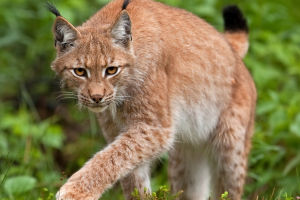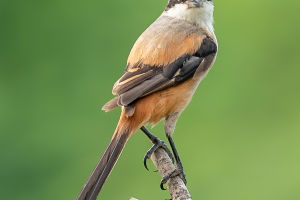The Himalayas, known as the "Roof of the World," boast the tallest and most majestic mountain range on Earth. Among its peaks, Mount Everest reigns supreme as the highest peak globally, earning the title "Top of the Earth."
Humans first conquered Everest in 1953, climbing the mountain remains a dangerous and challenging endeavor, even with advancements in technology and equipment.
However, amidst this perilous landscape, a remarkable bird annually traverses the Himalayas, occasionally soaring over Everest. With their graceful silhouettes and trailing clouds, they create an iconic spectacle against the snowy blue sky. These birds are the Demoiselle cranes.
Every year, in late October, Demoiselle cranes gather in the lower Himalayas before embarking on their ancient and mysterious migration route, which takes them over Mount Everest.
The grasslands, vibrant and picturesque like a painted scroll, become a temporary haven for these majestic cranes, enhancing the beauty of their surroundings.
The Demoiselle crane, a large wading bird, primarily inhabits open plains, grasslands, farmland, swamps, wetlands, and highland lakes. While breeding pairs are common, they usually engage in small group or family activities and rarely appear alone.
These birds possess a timid and alert nature, adept at evading humans and avoiding flocks of other cranes.
The Demoiselle crane exhibits distinctive physical characteristics, with a body length ranging from 68 to 92 centimeters and weighing between 1985 and 2750 grams.
Its head has a pearl-gray hue, while its neck and body feathers are blue-gray. The bird's red iris contrasts beautifully with its yellow-green bill.
Additionally, black markings adorn the side of its head, front neck, feet, and toes. White feathers surround its eyes and ear area, while the throat and front neck feathers extend dramatically into a strawberry-shaped formation, elegantly hanging down from its forehead.
The diet of Demoiselle cranes consists mainly of small fish, frogs, tadpoles, insects, plant shoots, leaves, and grass seeds, as well as corn and wheat.
The enchanting presence of Demoiselle cranes has captivated numerous wildlife photographers, particularly when capturing the sight of these birds alongside their young, resulting in delightful imagery.
The best time to photograph Demoiselle cranes hatching eggs and young birds breaking their shells is in mid to late June.
Two to three days after the young Demoiselle cranes hatch, they follow the adult cranes walking on the grass. They are fed small insects by their parents as they walk and sometimes engage in playful fights.
The scene is heartwarming and makes for pleasing shots, especially during sunrise and sunset. Backlighting the small cranes creates a beautiful effect with their fluffy feathers. If the shot includes a round red sun behind the Demoiselle crane and its young, the picture effect is even more impressive.
These elegant birds embark on an incredible migration, gracing the skies above Mount Everest with their presence.
With their unique physical characteristics, timid nature, and graceful movements, they captivate the hearts of both wildlife enthusiasts and photographers.
Whether they are observed in breeding pairs, small groups, or as solitary individuals, Demoiselle cranes add charm and beauty to their surroundings.
To witness them alongside their young, with the backdrop of a colorful grassland or a breathtaking sunrise, is truly a remarkable experience. The Demoiselle cranes and their annual journey through the Himalayas remind us of the delicate balance and captivating wonders of nature.


